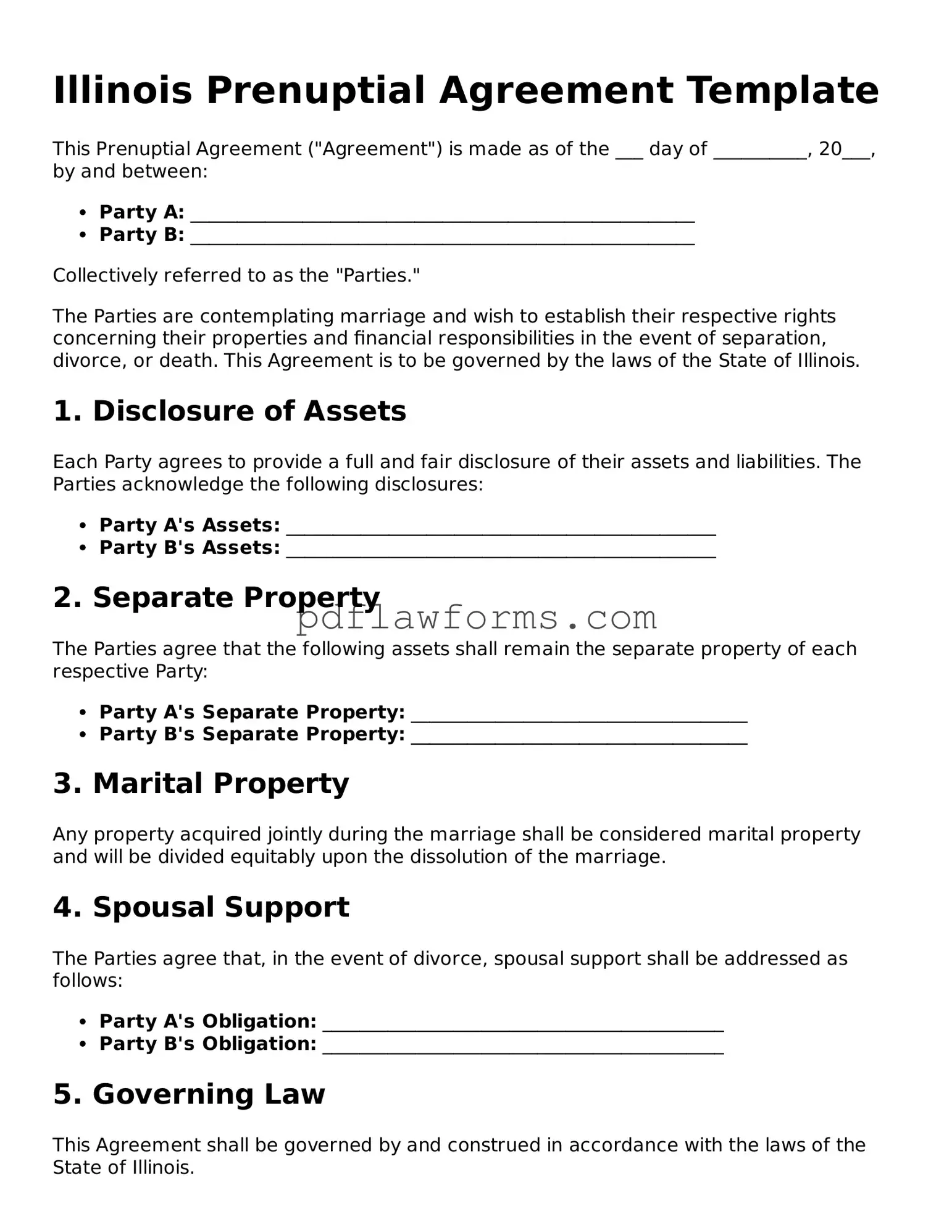Prenuptial Agreement Form for the State of Illinois
A Prenuptial Agreement in Illinois is a legal document that outlines the distribution of assets and responsibilities between partners in the event of divorce or separation. This agreement helps couples clarify their financial rights and obligations before marriage, ensuring transparency and mutual understanding. To get started on securing your financial future, fill out the form by clicking the button below.
Make My Document Online
